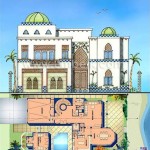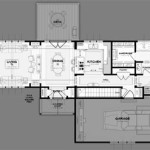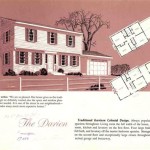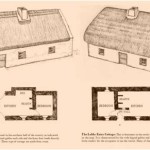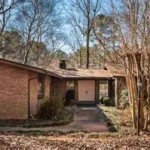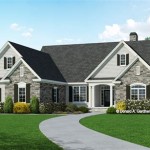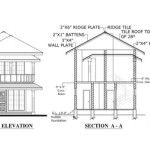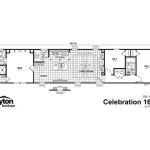English Cotswold Cottage House Plans: A Guide to Charming Country Living
The allure of the English countryside, with its rolling hills and quaint villages, has captivated people for centuries. A significant part of this charm stems from the traditional architecture, particularly the picturesque Cotswold cottages. These homes, with their honey-colored stone and distinctive architectural features, represent a timeless appeal. For those seeking to capture this essence, exploring Cotswold cottage house plans offers a pathway to realizing the dream of idyllic country living.
Key Features of Cotswold Cottage Architecture
Cotswold cottages are readily identifiable by several key architectural elements that contribute to their unique character. Understanding these features is crucial when selecting or designing house plans in this style.
1. Locally Sourced Stone: The quintessential Cotswold cottage is constructed of limestone, a material readily available in the Cotswolds region of England. This honey-colored stone gives these homes their characteristic warm hue and contributes to their seamless integration with the surrounding landscape.
2. Steeply Pitched Roofs: Traditionally, Cotswold cottage roofs are steeply pitched and often feature multiple gables. This design not only adds to the visual appeal but also served a practical purpose in shedding heavy snow and rainwater.
3. Mullioned Windows: Mullioned windows, composed of multiple panes of glass separated by vertical and horizontal bars (mullions), are a hallmark of Cotswold architecture. These windows add to the cottage's charm and provide ample natural light.
4. Inglenook Fireplaces: A large inglenook fireplace traditionally served as the heart of the Cotswold cottage, providing warmth and a focal point for family gatherings. Modern Cotswold cottage house plans often incorporate this feature, whether functioning or decorative, to maintain the traditional feel.
5. Exposed Beams: Exposed wooden beams, often made of oak, are a common feature in Cotswold cottages, adding to the rustic and charming aesthetic. These beams can be incorporated into ceilings, walls, and other structural elements.
6. Low Ceilings and Doorways: Traditional Cotswold cottages often feature low ceilings and doorways, adding to the cozy and intimate atmosphere. While modern adaptations may adjust these dimensions for practical reasons, retaining some of this characteristic can preserve the cottage's charm.
Adapting Cotswold Cottage Plans for Modern Living
While adhering to traditional architectural elements is essential, modern Cotswold cottage house plans can incorporate contemporary amenities and layouts to suit modern lifestyles.
Key Considerations for Modern Adaptations
1. Open Floor Plans: Traditional Cotswold cottages often featured smaller, more compartmentalized rooms. Modern adaptations can incorporate open-plan living spaces to create a sense of spaciousness while retaining the cottage's character through the use of exposed beams and other traditional features.
2. Updated Kitchens and Bathrooms: Modern kitchens and bathrooms, equipped with contemporary appliances and fixtures, can seamlessly integrate into a Cotswold cottage design. Careful selection of materials and finishes can maintain the cottage's traditional aesthetic while providing modern functionality.
3. Energy Efficiency: Incorporating energy-efficient features, such as insulation, double-glazed windows, and sustainable building materials, is crucial for modern Cotswold cottage designs. These features can reduce energy consumption and contribute to a more environmentally friendly home.
Finding the Right Cotswold Cottage House Plan
Finding the perfect Cotswold cottage house plan requires careful consideration of various factors, including budget, lifestyle, and the specific features desired.
Key Steps in Selecting a House Plan
1. Research and Inspiration: Gathering inspiration from books, magazines, and online resources is a vital first step. This research can help clarify preferences regarding size, layout, and specific architectural details.
2. Working with an Architect: Collaborating with an architect specializing in traditional or period-inspired homes can be invaluable. An architect can adapt existing plans or create custom designs that meet specific needs and site conditions.
3. Considering Site Conditions: The chosen house plan should be appropriate for the specific site on which the cottage will be built. Factors such as topography, soil type, and local building codes must be considered.
4. Budgeting: Establishing a realistic budget is crucial. The cost of building a Cotswold cottage can vary significantly depending on the size, materials, and complexity of the design.
Building a Cotswold Cottage
Building a Cotswold cottage is a significant undertaking that requires careful planning and execution. Selecting experienced and reputable builders is essential for ensuring the project's success.
Key Considerations for the Building Process
1. Choosing a Builder: Thoroughly vet potential builders, checking references and reviewing their portfolios. Experience with traditional building techniques and materials is crucial for accurately realizing a Cotswold cottage design.
2. Project Management: Effective project management is essential throughout the building process. Regular communication with the builder and careful monitoring of progress can help ensure the project stays on track and within budget.
3. Landscaping: The landscaping surrounding a Cotswold cottage should complement its architectural style. Traditional English gardens, featuring flowering plants, stone walls, and pathways, can enhance the cottage's charm and create a harmonious connection with the surrounding landscape.

Design No Ladies Home Journal House Pattern Catalog Cottage Plans Cotswold Vintage

1935 English Cotswold Style Cottage Ladies Home Journal American Residential Architecture House Plans Vintage

1920s English Cottage Small Homes Books Of A Thousand R Tissington Floor Plans Vintage House

Cotswold Cottage House Plans Casa De Campo Casas

Charming English Cotswold Style 43073pf Architectural Designs House Plans

Cotswold Cottage House Plans Freshouz Home Architecture Decor Country Cotswolds

Ine Holdaway Cotswold Cottage House Garden

Modern Country Style Cotswold Cottage House Tour

Cotswold Storybook Bungalow House Plans

Cotswolds Cottage Inspiration The Holiday Sets From Nancy Meyers O Lovely

